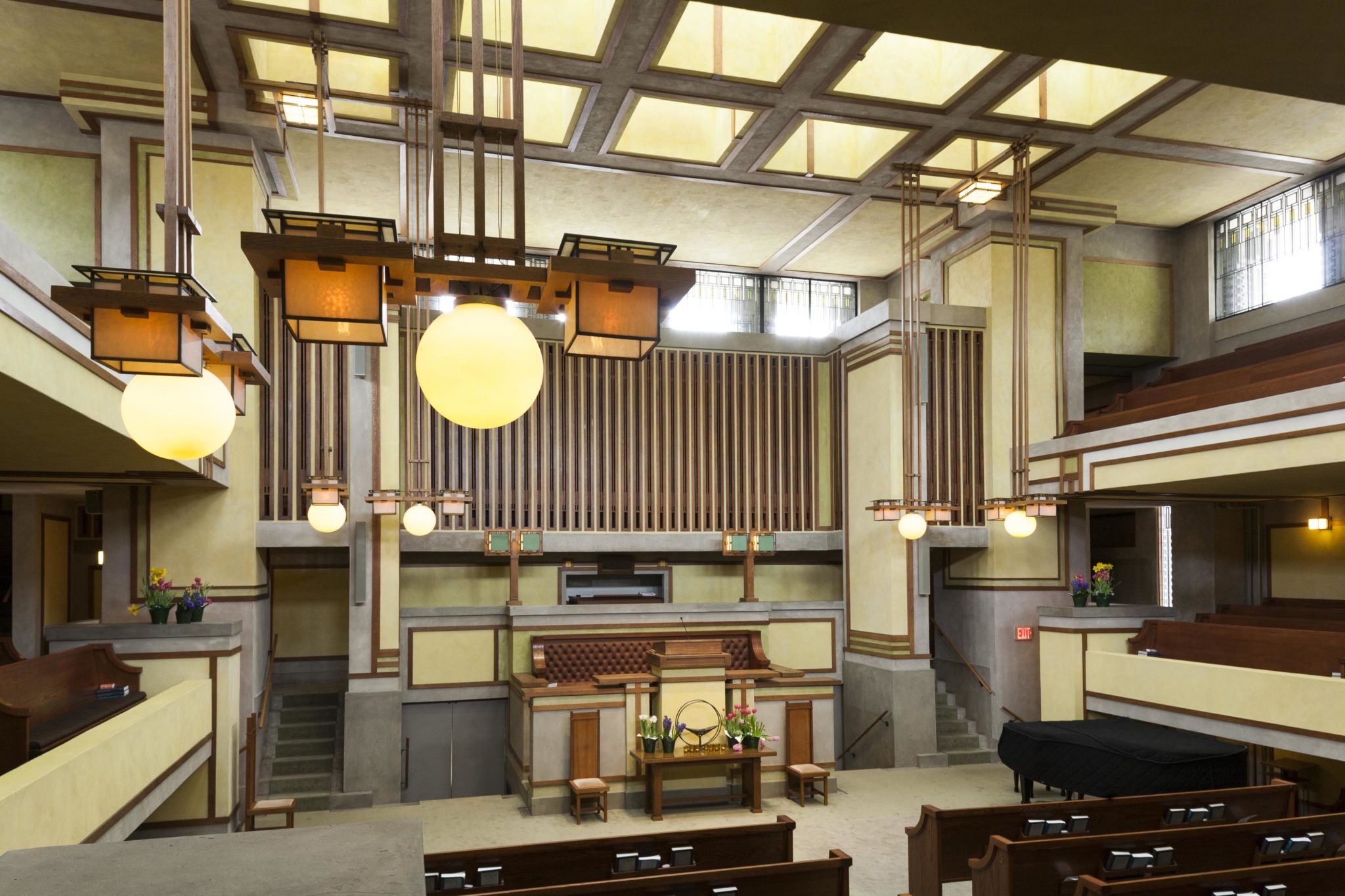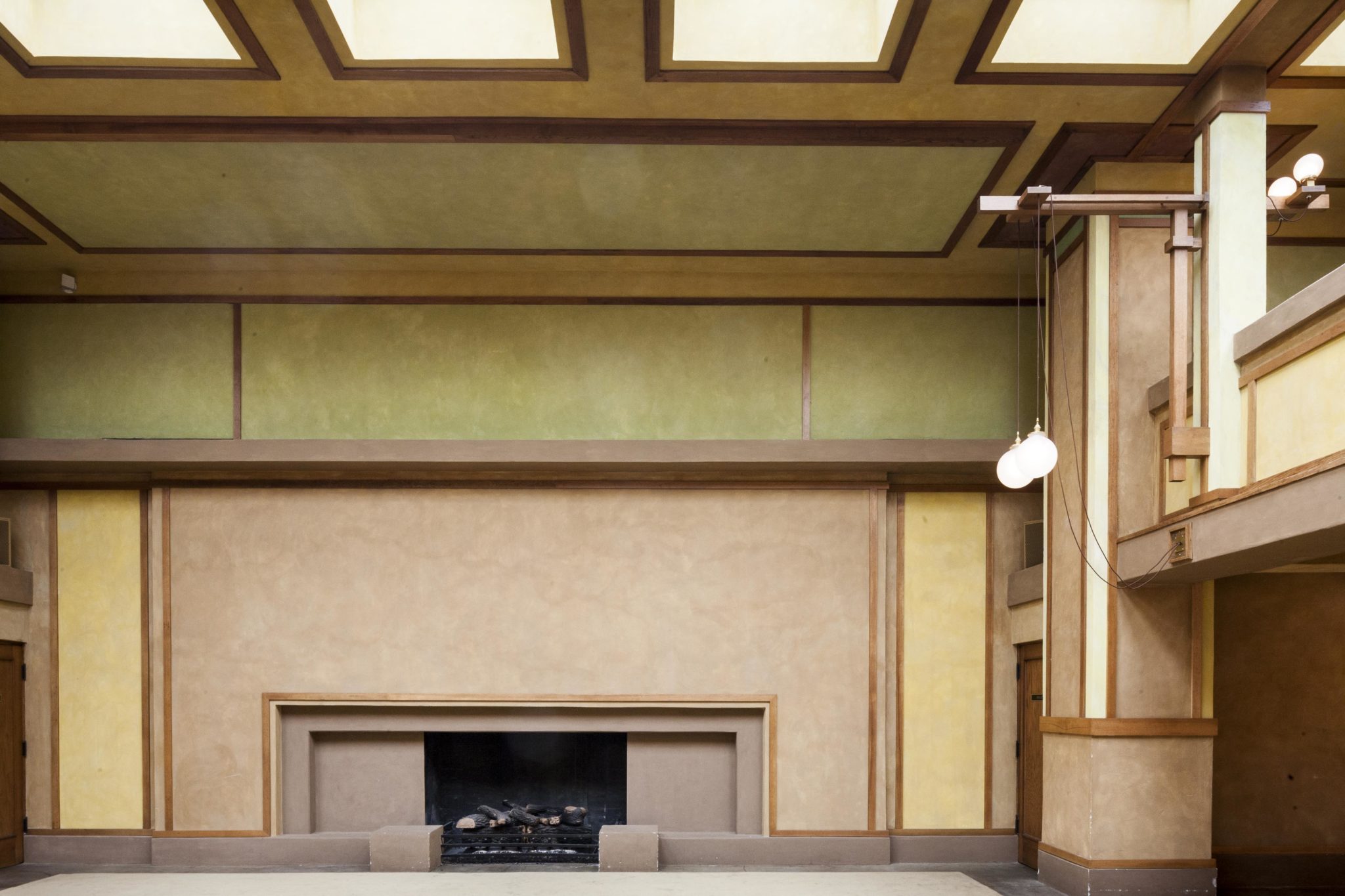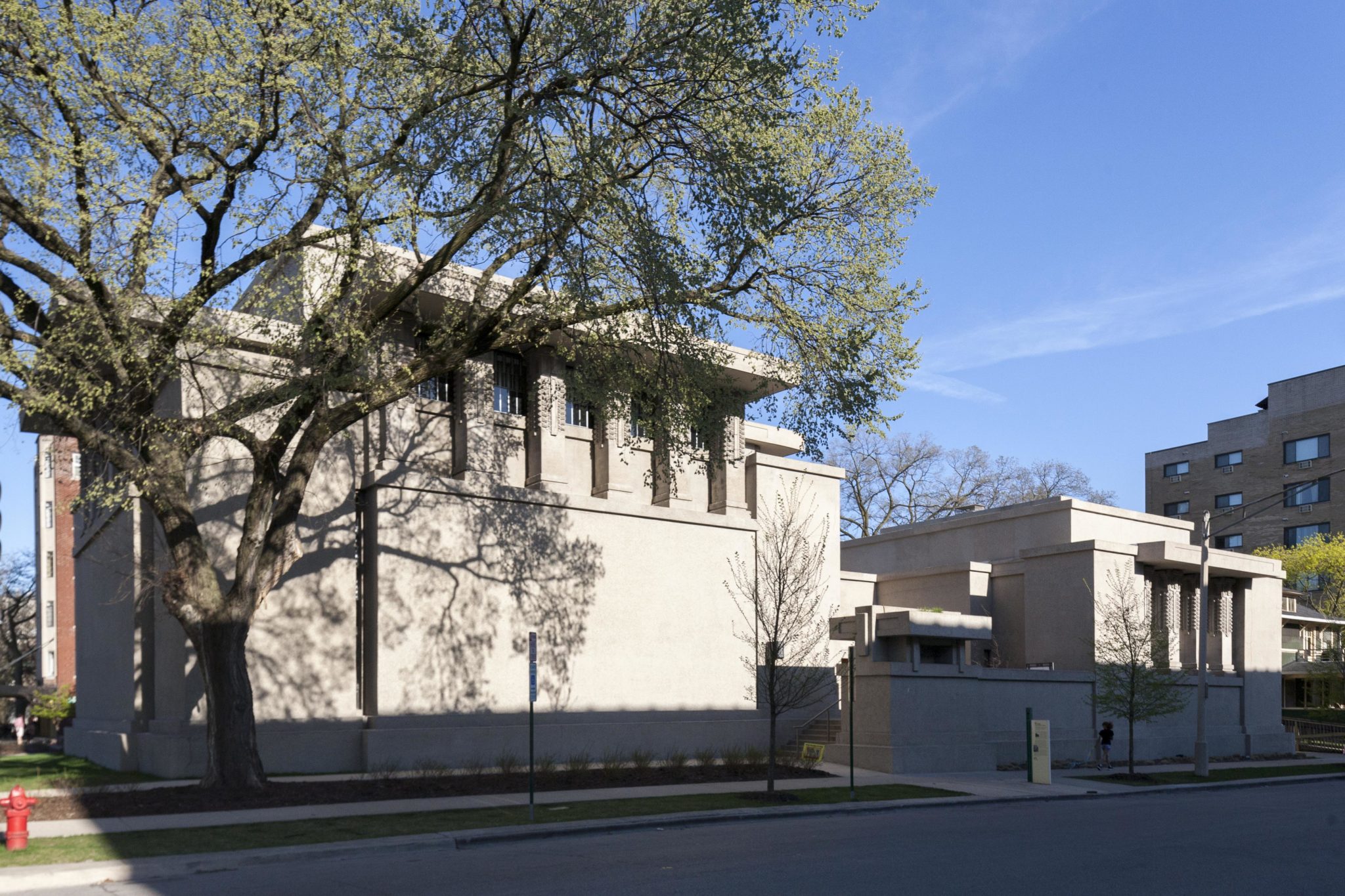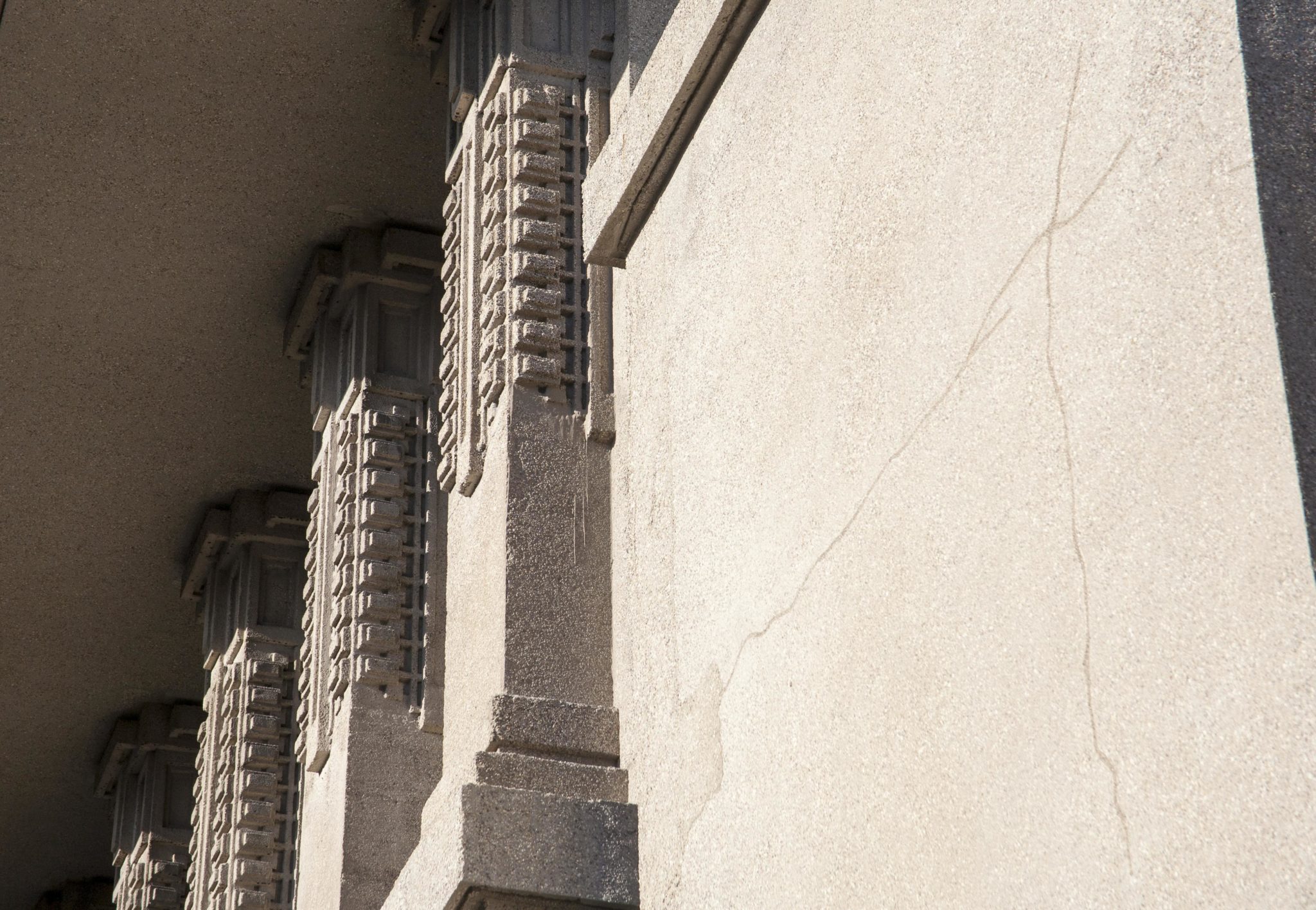Preservation Efforts
Thanks to years of hard work by a large team of dedicated local advocates led by the Unity Temple Restoration Foundation (UTRF) and the Unity Temple Unitarian Universalist Congregation, funds were raised with primary financial assistance provided by the Alphawood Foundation to complete this extensive and meticulous $23 million restoration. These funds included grants in 2005 and 2016 from Landmarks Illinois’ Preservation Heritage Fund. Landmarks Illinois also obtained a preservation easement on the property, ensuring the building’s historical integrity will be protected and maintained in perpetuity.
Restoration work began in 2015, and the project was predicted to wrap up by the end of 2016. However, like the original completion of the building, the renovations finished slightly behind schedule. Instead, the project was completed just in time for Wright’s 150th birthday on June 8, 2017.
In recognition of the incredible work done in the rehabilitation of this historic architectural wonder, Unity Temple received Landmarks Illinois’ 2017 Richard H. Driehaus Foundation Preservation Award for Restoration. The transformative restoration of this internationally renowned work allows for the continued use for worship by the congregation, improved experience for architectural tourists and improved functionality for community programming.
In 2018, plans were proposed for a 28-story high rise tower two parcels to the east of Unity Temple. UTRF, the congregation, the Village, citizens, various organizations including LI provided input on these plans as there were fears the tower would cast shadows on Unity Temple’s east and south facades and that construction would possible negatively impact the temple’s structure. The developer of those plans ultimately withdrew its plans for the tower, citing a lack of community support.
(Credit: Liz Chilsen)




